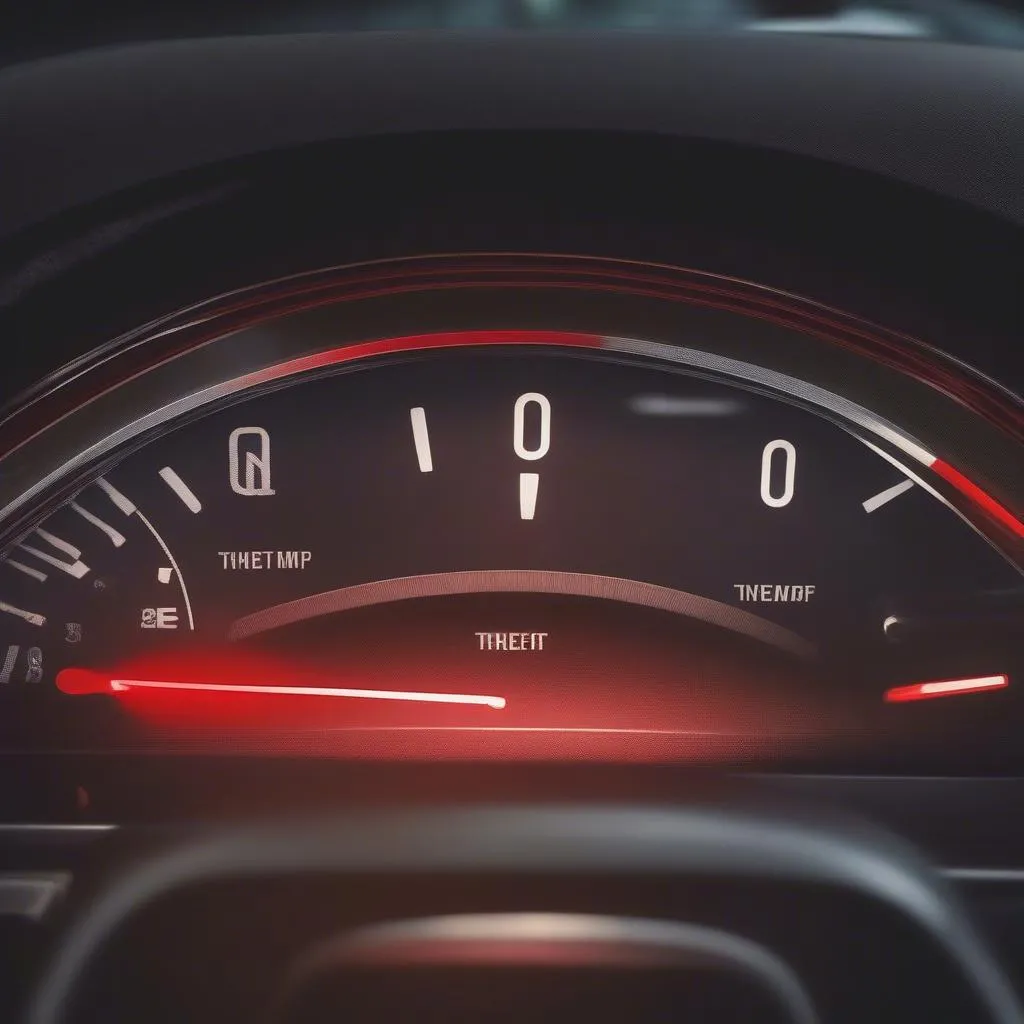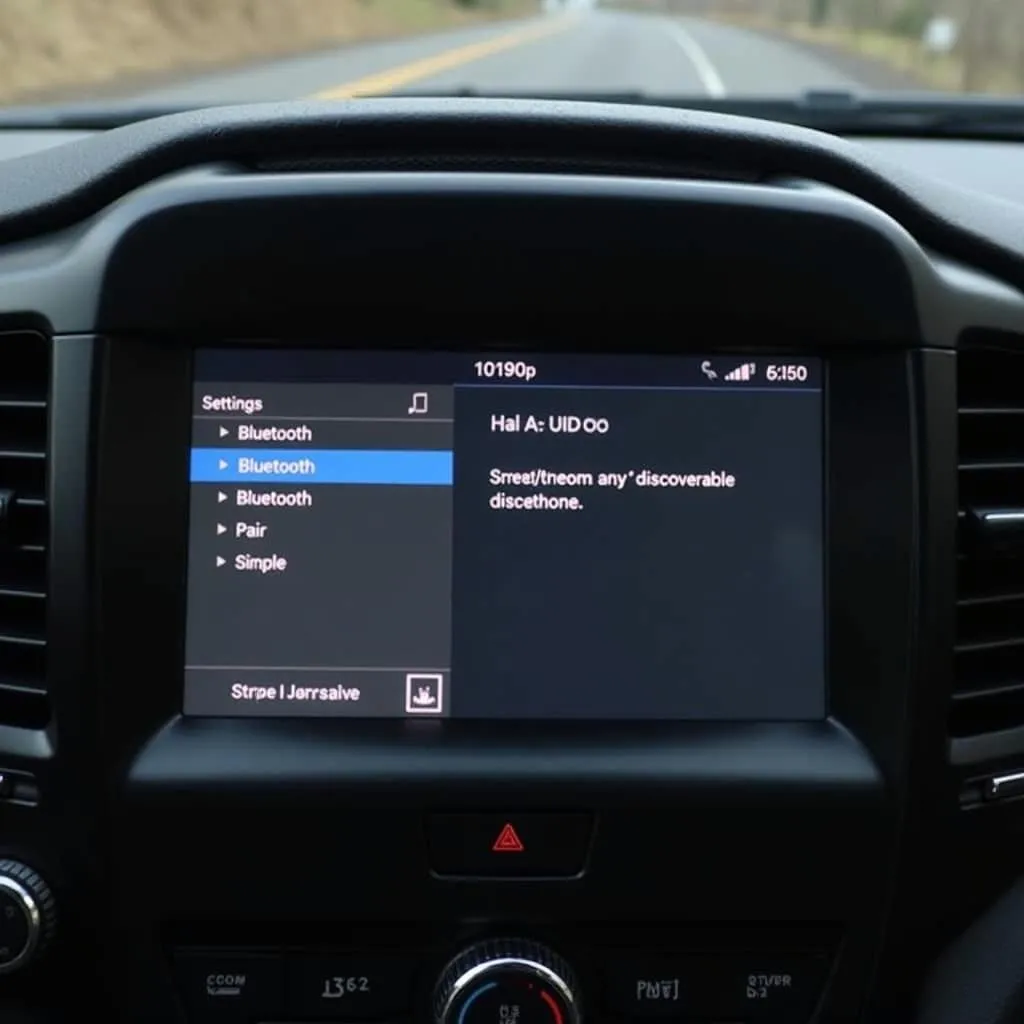The dreaded brake fluid warning light. For a Pontiac Solstice owner, it can be a signal to brace for a potential headache. This warning, often accompanied by a message on the driver information center, means your car is detecting a problem with the brake system that requires attention. Ignoring it could lead to significantly reduced braking ability, putting you and others at risk.
This article delves into the common reasons behind the “solstice brake fluid warning” and provides a comprehensive guide to help you troubleshoot and address the issue.
Understanding the Solstice Brake Fluid Warning
The brake fluid warning light illuminates for two primary reasons:
- Low Brake Fluid: This is the most common cause. Brake fluid levels naturally decline over time as brake pads wear down.
- Brake System Leak: A leak in the brake lines, calipers, or other components can lead to a rapid drop in brake fluid level, significantly impacting braking performance.
Diagnosing the Problem: Why is My Solstice Brake Fluid Light On?
Before you start ordering parts or scheduling a tow to the mechanic, there are a few checks you can do yourself:
-
Check Your Brake Fluid Level:
- Park your Solstice on a level surface and engage the parking brake.
- Locate the brake fluid reservoir under the hood. It’s usually a translucent container with a black cap labeled “Brake Fluid.”
- Check the fluid level. It should fall between the “Min” and “Max” markings on the reservoir.
- Important: If the fluid level is low, DO NOT simply top it off. This could mask a more serious issue like a leak.
-
Inspect for Leaks:
- Visually inspect the area around the brake fluid reservoir, brake lines, and each wheel well for any signs of fluid leakage. Brake fluid is typically clear or yellowish and has a slightly oily consistency.
- Note: Brake fluid can damage paint. If you notice any leaks, address them immediately.
Common Causes of a Solstice Brake Fluid Warning and How to Address Them
1. Worn Brake Pads
As brake pads wear down, the brake calipers need to extend further to engage the rotors. This requires more brake fluid, leading to a lower fluid level in the reservoir.
Solution: If you haven’t replaced your brake pads in a while (general recommendation is every 30,000-50,000 miles, but it varies depending on driving style and conditions), it’s highly likely they’re due for a change. Have a mechanic inspect your brakes and replace the pads if necessary.
2. Brake System Leak
A leak anywhere in the brake system—brake lines, hoses, calipers, wheel cylinders, or even the master cylinder—can trigger the brake fluid warning light.
Solution: Pinpointing a brake leak requires a thorough inspection by a qualified mechanic. They’ll check for leaks, damaged components, and worn seals. Depending on the severity and location of the leak, repair solutions can range from simple hose replacements to more complex caliper or master cylinder repairs.
“A small leak in your brake system may seem insignificant initially, but it’s crucial to remember that your brakes are a closed system,” says Jason Carter, a senior automotive technician with over 20 years of experience. “Even a minor leak will eventually lead to brake failure if left unaddressed. It’s always best to err on the side of caution and have any suspected leaks checked out by a professional.”
3. Faulty Brake Fluid Level Sensor
While less common, a malfunctioning brake fluid level sensor can also trigger a false warning. The sensor is located in the brake fluid reservoir and signals the car’s computer when the fluid level is low.
Solution: A mechanic can test the brake fluid level sensor and replace it if it’s faulty.
What to Do When Your Solstice Brake Fluid Warning Light Comes On
- Pull Over Safely: If you’re driving and the brake fluid warning light illuminates, safely pull over to the side of the road as soon as possible.
- Check the Brake Fluid Level: With the car parked on a level surface, carefully open the hood and check the brake fluid level in the reservoir.
- Inspect for Leaks: If you see signs of leakage, do not attempt to drive the car.
- Call for Assistance: If the fluid level is low or you suspect a leak, call a tow truck to transport your Solstice to a qualified mechanic for diagnosis and repair.
Prevention is Key: Maintaining Your Solstice’s Brake System
Regular maintenance can prevent many brake-related issues, including the dreaded “solstice brake fluid warning.” Here are some proactive measures:
- Regular Brake Inspections: Have your brakes inspected by a professional mechanic at least once a year, or more frequently if you drive in demanding conditions.
- Timely Brake Fluid Flushes: Brake fluid absorbs moisture over time, reducing its effectiveness. It’s recommended to flush and replace your brake fluid every 2 years or 24,000 miles to maintain optimal braking performance.
- Quality Brake Pads: Invest in high-quality brake pads from reputable brands. Good brake pads last longer and contribute to more efficient braking.
- Pay Attention to Warning Signs: Don’t ignore any unusual noises (squealing, grinding), vibrations, or changes in brake pedal feel. These could be early signs of a developing brake issue.
Conclusion
The “solstice brake fluid warning” is a serious issue that should never be ignored. By understanding its causes and taking prompt action, you can ensure your Pontiac Solstice remains safe and reliable on the road. Remember, a little preventative maintenance can go a long way in preventing costly repairs and keeping your Solstice’s braking system in optimal condition.


